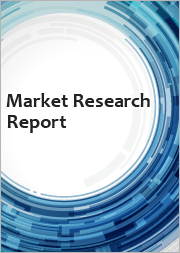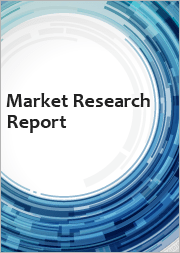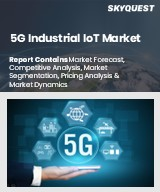
|
시장보고서
상품코드
1850544
IoT 솔루션 및 서비스 시장 : 전개 형태, 조직 규모, 용도별 - 세계 예측(2025-2032년)IoT Solutions & Services Market by Deployment Mode, Organization Size, Application - Global Forecast 2025-2032 |
||||||
IoT 솔루션 및 서비스 시장은 2032년까지 연평균 복합 성장률(CAGR) 19.45%로 1조 3,245억 달러에 이를 것으로 예측됩니다.
| 주요 시장 통계 | |
|---|---|
| 기준 연도 : 2024년 | 3,193억 9,000만 달러 |
| 추정 연도 : 2025년 | 3,804억 9,000만 달러 |
| 예측 연도 : 2032년 | 1조 3,245억 달러 |
| CAGR(%) | 19.45% |
연결성, 엣지 인텔리전스, 거버넌스 분야의 최근 발전이 기업의 IoT 도입 및 운영 전략을 어떻게 재정의하고 있는지, 미래 지향적인 방향성을 제시합니다.
이 Executive Summary는 계속 진화하는 IoT의 전망에 대해 간결하게 설명합니다. 최근 엣지 컴퓨팅, 전력 효율이 높은 센서 설계, 유비쿼터스 및 저전력 저소비전력 광역 네트워크 구축의 발전은 브라운필드와 그린필드 환경 모두에 IoT를 통합하는 데 있어 장벽을 낮추고 있습니다. 동시에 사이버 보안, 데이터 주권, 상호 운용 가능한 플랫폼에 대한 중요성이 강조되면서 기업들은 아키텍처 선택과 벤더와의 관계를 재평가해야 하는 상황에 직면해 있습니다.
파일럿 프로젝트에서 프로덕션급 서비스로 전환하려면 기업은 민첩성과 거버넌스의 균형을 맞추어야 합니다. 기술 리더은 정책 및 감사 기능을 유지하면서 반복적인 롤아웃을 가능하게 하는 모듈형 아키텍처를 우선시하고 있습니다. 그 결과, 조달 전략은 도입 형태, 조직 규모, 용도의 전문성이 판단 기준이 되는 유연한 상업적 모델로 전환되고 있습니다. 이 소개에서는 최신 IoT 이니셔티브를 정의하고, 빠른 혁신과 장기적인 운영 탄력성 사이의 전략적 긴장을 강조함으로써 이후 섹션의 틀을 구성합니다.
컴퓨팅의 분산화, 데이터 전략의 성숙, 규제 당국의 기대치 변화로 인해 IoT 아키텍처와 조달 역학이 어떻게 변화하고 있는가?
IoT 환경은 커넥티드 시스템의 경제성과 운영상의 기대에 변화를 가져오는 몇 가지 변화의 시기를 맞이하고 있습니다. 첫째, 컴퓨팅의 분산화가 진행되고 있습니다. 더 많은 워크로드가 지연 시간을 줄이고 대역폭을 확보하기 위해 장치 근처로 이동하고 있으며, 이로 인해 소프트웨어 설계 패턴이 변화하고 분산 노드 간의 강력한 오케스트레이션의 중요성이 커지고 있습니다. 둘째, 데이터 전략이 성숙해지고 있습니다. 자율적 또는 반자율적 의사결정을 위해 머신러닝을 운영 루프에 통합하여 자율적 또는 반자율적 의사결정을 가능하게 합니다.
이와 함께 규제, 지속가능성, 공급망에 대한 압박이 공급업체 선택과 라이프사이클 계획을 재구성하고 있습니다. 투명한 디바이스 출처, 에너지를 고려한 설계, 디바이스 수명을 연장하는 펌웨어 업데이트 경로에 대한 요구가 증가하고 있습니다. 상호운용성 또한 상업적 차별화 요소로 주장되고 있습니다. 레거시 산업용 프로토콜을 최신 API로 연결할 수 있는 플랫폼은 통합의 마찰을 줄여줍니다. 그 결과, 개방형 표준, 인증된 커넥터, 벤더 종속 위험을 줄이면서 가치 실현 시간을 단축하는 공동 설계 솔루션에 중점을 둔 파트너십과 에코시스템이 제품 기능만큼이나 중요해지고 있습니다.
IoT 가치사슬 전반의 조달, 공급업체 다변화, 복원력 계획을 재구성하는 누적 관세율 변화에 대한 실질적인 조직 대응
2025년 중 미국의 누적 관세 변경으로 인해 IoT 공급망과 조달 전략 전반에 걸쳐 실질적인 조정이 이루어지고 있으며, 부품 조달, 계약 조건, 재고 정책에 영향을 미치고 있습니다. 제조업체와 통합업체들은 공급업체 다변화, 일부 제조 활동의 리쇼어링 또는 니어쇼어링, 위험 분산을 위한 장기 계약 재협상을 통해 대응해 왔습니다. 이러한 조정은 기기 가격뿐만 아니라 물류의 복잡성, 컴플라이언스 관리, 관세 관련 관리 오버헤드 등을 고려한 보다 명확한 총소유비용 모델의 필요성을 강조하고 있습니다.
운영팀은 플랫폼의 재설계 없이 영향을 받는 구성요소를 대체할 수 있는 호환성과 모듈성에 중점을 두어 관세 변동에 대응해 왔습니다. 재무 리더는 관세로 인한 비용 차이와 잠재적인 통관 지연을 고려한 시나리오 계획을 수립하고, 조달은 투명한 원산지 문서와 탄탄한 비상 대응 계획을 제시하는 공급업체를 우선순위로 삼는다. 한편, 기술 로드맵은 거시경제 상황이 다시 변화할 경우, 더 긴 수명 주기로 전개될 수 있도록 재조정되고 있습니다. 이러한 대응을 종합하면, IoT 프로그램 계획은 단일 소스의 비용 우위에 의존하기보다는 탄력성과 유연성을 중시하는 경향이 강해지고 있음을 알 수 있습니다.
도입 형태, 조직 규모, 용도 전문성, 아키텍처 선택, 조달 행동, 통합 요구 사항을 결정하기 위해 수렴하는 방법
통찰력 있는 세분화는 조직이 운영상의 필요에 맞게 솔루션 선택을 조정할 수 있도록 도와줍니다. 이 분석은 기술적 아키텍처와 상업적 참여에 영향을 미치는 세 가지 실용적인 렌즈를 활용합니다. 배포 모드에 따라 클라우드와 On-Premise 시장을 조사했으며, 확장성, 지연 시간, 데이터 거버넌스 간의 트레이드오프를 파악하고 워크로드를 어디에 배치해야 하는지를 보여줍니다. 조직 규모별로 보면, 시장은 대기업과 중소기업을 대상으로 조사되었으며, 사내 시스템 통합 능력과 매니지드 서비스 및 사전 구성된 솔루션의 매력을 구분하여 조사되었습니다. 용도별로는 커넥티드 헬스케어, 스마트 헬스케어, 스마트 농업, 스마트 빌딩, 스마트 에너지 및 유틸리티, 스마트 제조, 스마트 모빌리티, 스마트 리테일 분야별로 조사되었으며, 규제 대응, 견고성, 실시간 제어 등 각 분야의 고유한 기능 요구사항이 부각되고 있습니다. 실시간 제어 등 각 분야별로 고유한 기능적 요구사항이 부각되고 있습니다.
각 세분화 축마다 우선순위가 다르다: 구축 모드는 아키텍처 패턴과 벤더 호환성을 결정하고, 조직 규모는 조달 시기, 계약 선호도, 실현 가능한 커스터마이징 정도에 영향을 미치며, 용도는 기능적 요구사항, 환경적 제약, 통합 복잡성을 촉진하고 합니다. 이러한 관점을 통합함으로써 이해관계자들은 투자와 운영 결과의 일관성을 높이고, 지연시간, 보안, 라이프사이클 요구사항에 부합하는 플랫폼과 파트너를 선택할 수 있습니다.
기업이 파일럿, 롤아웃, 공급업체 지원 모델의 우선순위를 정하는 데 영향을 미치는 수요, 규제, 생태계 성숙도의 지역적 특성 패턴
지역적 역학은 세계 IoT 프로그램의 전략적 선택을 계속 형성하고 있으며, 세 가지 거시적 지역은 수요, 규제 초점, 생태계 성숙도에 대해 서로 다른 패턴을 보이고 있습니다. 북미와 남미에서는 기업의 혁신 프로그램, 강력한 클라우드 도입, 엣지-투-클라우드 오케스트레이션을 중시하는 탄탄한 산업 자동화 기반이 급속한 보급을 주도하고 있습니다. 유럽, 중동 및 아프리카는 데이터 보호 규정, 에너지 전환 목표, 도시화 계획이 도입 일정과 벤더 선정에 영향을 미치는 이질적인 환경입니다. 아시아태평양은 제조업 규모와 고밀도 스마트시티 프로젝트를 주도하는 경우가 많으며, 광범위한 공급업체 네트워크와 실질적인 민관 협력 관계로 뒷받침되고 있습니다.
이러한 지역적 차이는 파일럿 계획이 시작되는 장소뿐만 아니라 공급업체가 지역 지원, 공급망 발자국, 인증 전략을 구성하는 방식에도 영향을 미칩니다. 다자간 프로그램에서는 규제 프레임워크와 연결 표준의 차이점을 조정하는 것이 여전히 큰 과제로 남아있으며, 지역별 컴플라이언스 요건을 충족하는 모듈식 제품 아키텍처와 유연한 상거래 조건이 필요합니다. 또한, 클라우드의 국가별 가용성 영역이나 고급 이동통신망 구축과 같은 지역별 인프라 투자는 특정 용도의 수직적 확장을 촉진하거나 제약할 수 있으며, 이는 기업이 구축 단계와 자본 배분의 우선순위를 정하는 데 영향을 미칠 수 있습니다.
개방성, 도메인 전문성, 파트너십 생태계별 벤더 차별화가 조달 선택과 장기적인 운영 성과를 어떻게 좌우하는가
기업이 벤더와 생태계 파트너를 선정할 때 고려해야 할 경쟁 역학 및 파트너십 구조를 주요 기업의 행동을 통해 파악할 수 있습니다. 주요 벤더들은 플랫폼의 개방성, 통합 툴체인, 디바이스 연결뿐만 아니라 분석, 디바이스 라이프사이클 관리, 사이버 보안 서비스를 포함한 엔드투엔드 매니지드 서비스를 제공하는 능력에 따라 차별화를 꾀하고 있습니다. 동시에, 틈새 제공업체들은 제조 산업을 위한 고급 예지보전 알고리즘, 의료 서비스를 위한 컴플라이언스 대응 텔레메트리 프레임워크 등 특정 분야에 특화된 기능을 제공함으로써 지지를 얻고 있습니다.
시스템 통합사업자, 통신사, 클라우드 제공업체는 복잡한 구축에 대응하기 위해 컨소시엄을 구성하는 경우가 많습니다. 따라서 고객들은 제품 자체의 역량뿐만 아니라 벤더의 파트너 네트워크, 전문 서비스, 크로스 도메인 통합 실적도 함께 평가할 것을 권장합니다. 투명한 로드맵, 강력한 제3자 인증, 장기적인 디바이스 관리, 펌웨어 업데이트, 보안 패치 적용에 대한 현실적인 접근 방식을 제시하는 벤더를 우선적으로 고려해야 합니다.
파일럿에서 생산으로의 전환을 가속화하고, 공급 탄력성을 강화하며, 장기적인 IoT 가치 실현을 보호하기 위한 거버넌스를 구축하기 위한 실질적인 조치들
업계 리더은 탄력성, 상호운용성, 측정 가능한 성과를 우선시하는 일련의 실행 가능한 조치를 채택함으로써 전략적 인사이트를 경쟁 우위로 전환할 수 있습니다. 첫째, 가치 입증 활동을 운영 KPI에 직접 연결하고, 파일럿에 확장을 위한 명확한 에스컬레이션 경로가 포함되도록 합니다. 둘째, 모듈식 인터페이스와 표준화된 API를 갖춘 솔루션을 설계하여 통합 마찰을 줄이고 공급 조건이 변경될 경우 구성 요소를 교체할 수 있도록 합니다. 셋째, 향후 업그레이드를 위한 유연성을 유지하면서 공급업체와 위험을 공유하기 위해 고정 요소와 가변 요소의 균형을 맞추는 계약을 체결합니다.
이와 병행하여, 탬퍼링 방지 업데이트 메커니즘과 명확한 자산 목록을 도입하여 디바이스 라이프사이클 및 사이버 보안에 대한 거버넌스를 강화합니다. OT 팀과 IT 팀을 연결하는 인력과 프로세스에 투자하여 안전한 배포를 가속화하고 운영의 연속성을 유지합니다. 마지막으로, 공급업체 다양성 및 지역 조달 전략을 추구하고, 지정학적 또는 관세 관련 혼란을 완화하고, 중요한 배치 지역에서 지원 실적가 확립된 공급업체를 우선시합니다. 이러한 행동을 종합적으로 수행함으로써 Time-to-Value를 단축하고, 운영의 서프라이즈를 줄이고, 지속적인 혁신의 기반을 구축할 수 있습니다.
실무자 인터뷰, 2차 분석, 시나리오 검증을 통합한 엄격한 혼합 방법론 연구 접근법을 통해 실용적인 IoT 인사이트를 도출합니다.
본 Executive Summary를 뒷받침하는 조사는 질적 접근과 양적 접근을 결합하여 견고성과 맥락적 타당성을 확보할 수 있도록 설계되었습니다. 1차 조사에서는 디바이스 제조업체, 시스템 통합사업자, 도입 기업, 기술 벤더 등 가치사슬 전반의 실무자를 대상으로 구조화된 인터뷰를 실시하여 도입 과제, 조달 근거, 운영상의 제약 등을 파악했습니다. 2차 조사에서는 공개된 기술 사양서, 규제 지침, 피어 리뷰 연구를 통합하여 이용 사례 요구 사항과 아키텍처 동향을 확인했습니다.
데이터 삼각측량을 통해 의견 차이를 조정하고, 합의된 주제를 추출하기 위해 데이터 삼각측량 방법을 사용했습니다. 또한, 시나리오 분석은 거시경제적 요인과 정책 전환이 공급업체의 전략에 어떤 영향을 미칠 수 있는지를 파악하는 데 도움이 되었습니다. 조사 방법의 엄밀성은 전문가의 반복적인 검증을 통해 강화되었으며, 조사 결과가 이론적 구성이 아닌 실제 운영 실태를 반영하고 있음을 확인하였습니다. 적절한 경우 익명화된 사례 연구를 사용하여 고객별 정보를 공개하지 않고 현실적인 트레이드오프와 의사결정 경로를 설명했습니다.
확장 가능하고 탄력적인 IoT 구축의 기반이 되는 모듈성, 거버넌스, 생태계 무결성을 강조한 간결한 종합서
마지막으로, 오늘날의 IoT 개념은 기술적 선견지명과 현실적인 운영 계획을 신중하게 결합할 것을 요구하고 있습니다. 혁신이 주요 원동력인 것은 변함없지만, 지속 가능한 성과는 규제, 경제, 공급망 상황의 변화에 적응할 수 있는 아키텍처에 달려있습니다. 모듈화, 강력한 거버넌스, 파트너 생태계를 우선시하는 조직은 파일럿 프로그램을 확장 가능한 프로그램으로 전환하여 측정 가능한 비즈니스 개선을 달성할 수 있는 유리한 위치에 있습니다.
성공의 길은 반복적인 전개, 비즈니스 성과와의 명확한 정합성, 관세 및 지정학적 변화를 예측한 컨틴전시 플래닝을 중시하는 것입니다. 기업은 조달, 설계, 라이프사이클 관리에 탄력성을 통합함으로써 현재 이용 사례의 이점을 실현할 수 있을 뿐만 아니라 미래의 기능과 광범위한 디지털 전환 이니셔티브를 위한 유연한 기반을 구축할 수 있습니다.
목차
제1장 서문
제2장 조사 방법
제3장 주요 요약
제4장 시장 개요
제5장 시장 인사이트
제6장 미국 관세의 누적 영향 2025
제7장 AI의 누적 영향 2025
제8장 IoT 솔루션 및 서비스 시장 : 전개 모드별
- 클라우드
- On-Premise
제9장 IoT 솔루션 및 서비스 시장 : 조직 규모별
- 대기업
- 중소기업
제10장 IoT 솔루션 및 서비스 시장 : 용도별
- 커넥티드 헬스케어
- 스마트 농업
- 스마트 빌딩
- 스마트 에너지 및 유틸리티
- 스마트 제조
- 스마트 모빌리티
- 스마트 리테일
제11장 IoT 솔루션 및 서비스 시장 : 지역별
- 아메리카
- 북미
- 라틴아메리카
- 유럽, 중동 및 아프리카
- 유럽
- 중동
- 아프리카
- 아시아태평양
제12장 IoT 솔루션 및 서비스 시장 : 그룹별
- ASEAN
- GCC
- EU
- BRICS
- G7
- NATO
제13장 IoT 솔루션 및 서비스 시장 : 국가별
- 미국
- 캐나다
- 멕시코
- 브라질
- 영국
- 독일
- 프랑스
- 러시아
- 이탈리아
- 스페인
- 중국
- 인도
- 일본
- 호주
- 한국
제14장 경쟁 구도
- 시장 점유율 분석, 2024
- FPNV 포지셔닝 매트릭스, 2024
- 경쟁 분석
- Cisco Systems, Inc.
- International Business Machines Corporation
- Microsoft Corporation
- Amazon Web Services, Inc.
- Siemens Aktiengesellschaft
- Intel Corporation
- Huawei Technologies Co., Ltd.
- SAP SE
- PTC Inc.
- Google LLC
The IoT Solutions & Services Market is projected to grow by USD 1,324.50 billion at a CAGR of 19.45% by 2032.
| KEY MARKET STATISTICS | |
|---|---|
| Base Year [2024] | USD 319.39 billion |
| Estimated Year [2025] | USD 380.49 billion |
| Forecast Year [2032] | USD 1,324.50 billion |
| CAGR (%) | 19.45% |
A forward-looking orientation to how recent advances in connectivity, edge intelligence, and governance are redefining enterprise IoT adoption and operational strategy
The Internet of Things continues to reshape how organizations capture, interpret, and act on real-world signals, and this executive summary opens with a concise orientation to that evolving landscape. Recent advances in edge computing, more power-efficient sensor designs, and ubiquitous low-power wide-area network deployments have collectively lowered barriers to integrating IoT into both brownfield and greenfield environments. At the same time, increased emphasis on cybersecurity, data sovereignty, and interoperable platforms is prompting enterprises to re-evaluate architecture choices and vendor relationships.
Transitioning from pilot projects to production-grade services requires firms to balance agility with governance. Technology leaders are increasingly prioritizing modular architectures that permit iterative rollouts while preserving the ability to enforce policy and auditability. Consequently, procurement strategies are shifting toward flexible commercial models where deployment mode, organizational scale, and application specialization drive decision criteria. This introduction frames the subsequent sections by highlighting the strategic tension between rapid innovation and long-term operational resilience that defines modern IoT initiatives.
How decentralization of compute, maturation of data strategies, and evolving regulatory expectations are jointly transforming IoT architectures and procurement dynamics
The IoT landscape is undergoing several transformative shifts that are altering the economics and operational expectations of connected systems. First, compute is decentralizing: more workloads are moving closer to devices to reduce latency and preserve bandwidth, which changes software design patterns and increases the importance of robust orchestration across distributed nodes. Second, data strategies are maturing. Organizations are moving from collecting telemetry for hindsight to deploying analytics for foresight, embedding machine learning within operational loops to enable autonomous or semi-autonomous decision making.
In parallel, regulatory, sustainability, and supply-chain pressures are reshaping vendor selection and lifecycle planning. There is growing demand for transparent device provenance, energy-aware designs, and firmware update pathways that extend device longevity. Interoperability is also asserting itself as a commercial differentiator; platforms that can bridge legacy industrial protocols with modern APIs are reducing integration friction. As a result, partnerships and ecosystems are becoming as important as product features, with an emphasis on open standards, certified connectors, and co-engineered solutions that accelerate time-to-value while reducing vendor lock-in risks.
Practical organizational responses to cumulative tariff shifts that are reshaping procurement, supplier diversification, and resilience planning across IoT value chains
The introduction of cumulative tariff changes in the United States during 2025 has instigated practical adjustments across IoT supply chains and procurement strategies, influencing component sourcing, contract terms, and inventory policies. Manufacturers and integrators have responded by diversifying supplier bases, reshoring or nearshoring select manufacturing activities, and renegotiating long-term agreements to distribute risk. These adjustments have emphasized the need for clearer total-cost-of-ownership models that account not only for device price but also for logistics complexity, compliance management, and tariff-related administrative overhead.
Operational teams have reacted to tariff volatility by increasing emphasis on compatibility and modularity, which enables substitution of impacted components without wholesale platform redesign. Finance leaders are instituting scenario planning that incorporates tariff-driven cost differentials and potential customs delays, while procurement is prioritizing suppliers that demonstrate transparent country-of-origin documentation and robust contingency plans. Meanwhile, technology roadmaps are being recalibrated so that deployments with longer lifecycles can be adapted if macroeconomic conditions shift again. Collectively, these responses illustrate a broader trend toward resilience and flexibility in IoT program planning rather than reliance on single-source cost advantages.
How deployment mode, organizational scale, and application specialization converge to dictate architecture choices, procurement behaviors, and integration requirements
Insightful segmentation helps organizations match solution choices to operational needs, and this analysis leverages three pragmatic lenses that influence both technical architecture and commercial engagement. Based on Deployment Mode, the market is studied across Cloud and On-Premises, which highlights trade-offs between scalability, latency, and data governance and informs where workloads should reside. Based on Organization Size, the market is studied across Large Enterprises and Small And Medium-Sized Enterprises, which distinguishes between the capacity for in-house systems integration and the appeal of managed services and preconfigured solutions. Based on Application, the market is studied across Connected Healthcare, Smart Agriculture, Smart Buildings, Smart Energy & Utilities, Smart Manufacturing, Smart Mobility, and Smart Retail, which surfaces domain-specific functional requirements such as regulatory compliance, ruggedization, and real-time control.
Each segmentation axis yields different priorities: Deployment Mode dictates architectural patterns and vendor compatibility; Organization Size influences procurement cadence, contracting preferences, and the degree of customization that is feasible; and Application drives feature requirements, environmental constraints, and integration complexity. By synthesizing these perspectives, stakeholders can better align investments with operational outcomes, selecting platforms and partners that match latency, security, and lifecycle needs while enabling clear pathways for scaling and adaptation over time.
Distinct regional patterns in demand, regulation, and ecosystem maturity that influence where enterprises prioritize pilots, rollouts, and supplier support models
Regional dynamics continue to shape strategic choices for global IoT programs, and three macro-regions exhibit distinct patterns of demand, regulatory focus, and ecosystem maturity. In the Americas, rapid adoption is being driven by enterprise innovation programs, strong cloud adoption, and a robust industrial automation base that values edge-to-cloud orchestration. Europe, Middle East & Africa present a heterogeneous environment where data protection rules, energy transition targets, and urbanization initiatives influence deployment timelines and vendor selection. Asia-Pacific often leads on manufacturing-scale deployments and dense smart-city projects, supported by a broad supplier network and substantial public-private collaboration.
These regional distinctions affect not only where pilots are launched but also how vendors structure regional support, supply chain footprints, and certification strategies. For multinational programs, reconciling divergent regulatory frameworks and connectivity standards remains a persistent challenge, necessitating modular product architectures and flexible commercial terms that accommodate localized compliance requirements. In addition, regional infrastructure investments-such as national cloud availability zones or advanced cellular rollouts-can accelerate or constrain particular application verticals, shaping where enterprises prioritize rollout phases and capital allocation.
How vendor differentiation through openness, domain specialization, and partnership ecosystems shapes procurement choices and long-term operational outcomes
Key company behaviors reveal competitive dynamics and partnership structures that enterprises should weigh when selecting vendors and ecosystem partners. Leading vendors are differentiating based on platform openness, integration toolchains, and the ability to deliver end-to-end managed services that extend beyond device connectivity to include analytics, device lifecycle management, and cybersecurity services. At the same time, niche providers are gaining traction by offering domain-specific capabilities-such as advanced predictive maintenance algorithms for manufacturing or compliance-enabled telemetry frameworks for healthcare-that reduce time-to-value for targeted use cases.
Partnership strategies are central to delivering comprehensive solutions; systems integrators, telecom operators, and cloud providers frequently coalesce in consortia to address complex deployments. Customers are therefore advised to evaluate not only standalone product capabilities but also a vendor's partner network, professional services depth, and track record of cross-domain integration. Procurement decisions should favor vendors that demonstrate transparent roadmaps, robust third-party certification, and a pragmatic approach to long-term device management, firmware updates, and security patching.
Practical measures to accelerate pilot-to-production conversion, enhance supply resilience, and embed governance that safeguards long-term IoT value realization
Industry leaders can translate strategic insight into competitive advantage by adopting a set of actionable measures that prioritize resilience, interoperability, and measurable outcomes. First, tie proof-of-value activities directly to operational KPIs and ensure pilots include clear escalation pathways for scaling. Second, design solutions with modular interfaces and standardized APIs to reduce integration friction and enable component substitution if supply conditions change. Third, establish contractual arrangements that balance fixed and variable elements to share risk with suppliers while preserving flexibility for future upgrades.
In parallel, strengthen governance around device lifecycle and cybersecurity by implementing tamper-resistant update mechanisms and clear asset inventories. Invest in talent and processes that bridge OT and IT teams to accelerate secure deployments and maintain operational continuity. Finally, pursue supplier diversity and regional sourcing strategies to mitigate geopolitical or tariff-related disruptions, and prioritize vendors with established support footprints in your critical deployment geographies. Collectively, these actions will reduce time-to-value, lower operational surprises, and create a foundation for continued innovation.
A rigorous mixed-methods research approach that integrates practitioner interviews, secondary analysis, and scenario validation to surface actionable IoT insights
The research underpinning this executive summary combines qualitative and quantitative approaches designed to ensure robustness and contextual relevance. Primary research included structured interviews with practitioners across the value chain-spanning device manufacturers, systems integrators, enterprise adopters, and technology vendors-to capture implementation challenges, procurement rationales, and operational constraints. Secondary research synthesized publicly available technical specifications, regulatory guidance, and peer-reviewed studies to validate use-case requirements and architectural trends.
Data triangulation was employed to reconcile divergent viewpoints and extract consensus themes, while scenario analysis helped illuminate how macroeconomic factors and policy shifts could influence supplier strategies. Methodological rigor was reinforced through iterative validation with subject-matter experts, ensuring findings reflect operational realities rather than theoretical constructs. Where appropriate, anonymized case studies were used to illustrate practical trade-offs and decision pathways without disclosing proprietary customer information.
A concise synthesis emphasizing modularity, governance, and ecosystem alignment as the foundation for scalable, resilient IoT deployments
In closing, IoT initiatives today demand a careful blend of technological foresight and pragmatic operational planning. While innovation remains a primary driver, sustainable outcomes depend on architectures that can be adapted as regulatory, economic, and supply-chain conditions evolve. Organizations that prioritize modularity, robust governance, and partner ecosystems will be better positioned to convert pilots into scalable programs that deliver measurable operational improvements.
The pathways to success emphasize iterative deployment, clear alignment with business outcomes, and contingency planning that anticipates tariff and geopolitical shifts. By embedding resilience into procurement, design, and lifecycle management, enterprises will not only realize current use-case benefits but also create a flexible foundation for future capabilities and broader digital transformation efforts.
Table of Contents
1. Preface
- 1.1. Objectives of the Study
- 1.2. Market Segmentation & Coverage
- 1.3. Years Considered for the Study
- 1.4. Currency & Pricing
- 1.5. Language
- 1.6. Stakeholders
2. Research Methodology
3. Executive Summary
4. Market Overview
5. Market Insights
- 5.1. Proliferation of edge computing architectures in IoT networks to minimize latency and enable rapid data analytics
- 5.2. Integration of artificial intelligence and machine learning in IoT devices for predictive maintenance and operational efficiency
- 5.3. Adoption of 5G connectivity to support massive IoT deployments and ultra reliable low latency communications in smart cities
- 5.4. Implementation of end to end IoT cybersecurity frameworks to address rising threats across heterogeneous device ecosystems
- 5.5. Deployment of digital twin technologies to virtually replicate physical assets and optimize industrial IoT performance
- 5.6. Expansion of IoT solutions in healthcare for continuous remote patient monitoring and advanced telehealth capabilities
- 5.7. Industry collaboration and standardization initiatives to ensure interoperability across diverse IoT platforms and devices
- 5.8. Investment in sustainable IoT energy management systems for real time monitoring and reduction of carbon footprints
- 5.9. Utilization of blockchain ledgers to secure IoT data transactions and enhance transparency in supply chain networks
6. Cumulative Impact of United States Tariffs 2025
7. Cumulative Impact of Artificial Intelligence 2025
8. IoT Solutions & Services Market, by Deployment Mode
- 8.1. Cloud
- 8.2. On-Premises
9. IoT Solutions & Services Market, by Organization Size
- 9.1. Large Enterprises
- 9.2. Small And Medium-Sized Enterprises
10. IoT Solutions & Services Market, by Application
- 10.1. Connected Healthcare
- 10.2. Smart Agriculture
- 10.3. Smart Buildings
- 10.4. Smart Energy & Utilities
- 10.5. Smart Manufacturing
- 10.6. Smart Mobility
- 10.7. Smart Retail
11. IoT Solutions & Services Market, by Region
- 11.1. Americas
- 11.1.1. North America
- 11.1.2. Latin America
- 11.2. Europe, Middle East & Africa
- 11.2.1. Europe
- 11.2.2. Middle East
- 11.2.3. Africa
- 11.3. Asia-Pacific
12. IoT Solutions & Services Market, by Group
- 12.1. ASEAN
- 12.2. GCC
- 12.3. European Union
- 12.4. BRICS
- 12.5. G7
- 12.6. NATO
13. IoT Solutions & Services Market, by Country
- 13.1. United States
- 13.2. Canada
- 13.3. Mexico
- 13.4. Brazil
- 13.5. United Kingdom
- 13.6. Germany
- 13.7. France
- 13.8. Russia
- 13.9. Italy
- 13.10. Spain
- 13.11. China
- 13.12. India
- 13.13. Japan
- 13.14. Australia
- 13.15. South Korea
14. Competitive Landscape
- 14.1. Market Share Analysis, 2024
- 14.2. FPNV Positioning Matrix, 2024
- 14.3. Competitive Analysis
- 14.3.1. Cisco Systems, Inc.
- 14.3.2. International Business Machines Corporation
- 14.3.3. Microsoft Corporation
- 14.3.4. Amazon Web Services, Inc.
- 14.3.5. Siemens Aktiengesellschaft
- 14.3.6. Intel Corporation
- 14.3.7. Huawei Technologies Co., Ltd.
- 14.3.8. SAP SE
- 14.3.9. PTC Inc.
- 14.3.10. Google LLC



















